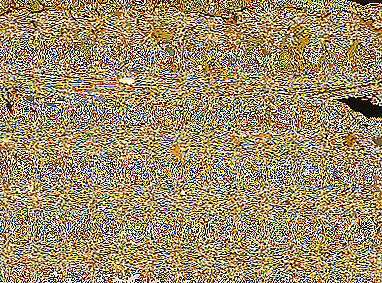 It is recorded that annually over 25% of individuals die from liver diseases in rabbits, and about 10% are subjected to involuntary slaughter. Animals are very sensitive to various infections, so you should strictly monitor the state of the animals and provide them with comfortable living conditions. However, even high hygiene content and a balanced diet can not be a guarantee that the rabbit will not overtake the liver. What can cause diseases, how to treat them and prevent the death of a pet, let's consider.
It is recorded that annually over 25% of individuals die from liver diseases in rabbits, and about 10% are subjected to involuntary slaughter. Animals are very sensitive to various infections, so you should strictly monitor the state of the animals and provide them with comfortable living conditions. However, even high hygiene content and a balanced diet can not be a guarantee that the rabbit will not overtake the liver. What can cause diseases, how to treat them and prevent the death of a pet, let's consider.
The value of the liver for the rabbit
One of the most important organs of any living organism is the liver.
It performs a number of very powerful functions necessary to maintain the normal state of the animal:
- detoxification - neutralization from toxic substances;
- normalization of metabolic processes - hormonal and fat metabolism, the metabolism of proteins and vitamins;
- circulation;
- normalization of the immune system;
- normalization of the digestive system.
Learn more about rabbit anatomy.
Liver diseases can occur against the background of various pathological processes, ranging from disruptions in the functioning of the digestive system associated with poor nutrition, and ending with viral and infectious diseases, especially those in a chronic form, since they do not have time to develop in acute pathology. 
Signs of liver disease
Liver diseases in animals appear quite characteristic signs.
Special attention should be paid if the animal has:
- there is apathy, lethargy, denial of food;
- sharply decreased weight, up to depletion of the body;
- increased thirst or complete rejection of water;
- problems with the gastrointestinal tract: diarrhea or constipation, bloating, abdominal pain;
- skin problems: inflammation of the skin, severe itching, dandruff, the formation of areas of baldness, dehydration of the skin;
- yellowing and dryness of the mucous membranes;
- the color of urine changed, became lighter or, conversely, too dark;
- hemorrhages appeared;
- blood clotting problems started;
- appeared "abdominal dropsy" - ascites, manifested in the form of accumulation of fluid in the abdominal cavity. Such pathology, as a rule, develops when the liver, kidneys or heart are impaired.
Did you know? Carcasses of rabbits, forced killed by coccidiosis (the most common liver disease), can be eaten, but do not use the liver and intestines. Animal skins are permissible to use without restriction.If a rabbit has at least one of the above symptoms, it should immediately be shown to a veterinarian.

Possible diseases
Causes of liver disease may have a different origin, depending on the factors causing violations:
- non-contagiousresulting from intoxication of the body;
- infectious - developing under the action of toxins caused by viruses or bacteria;
- invasive - sources of which can be the waste products of helminths and other parasites.
Let's look at the most common liver afflictions in rabbits.
We recommend that you familiarize yourself with the methods of treatment and prevention of rabbit diseases, as well as learn which diseases of these rodents threaten human health.
Gastrointestinal Inflammation
Inflammation of the gastrointestinal tract is quite common in rabbits, and young individuals are most susceptible to it. Diseases of the digestive system in most cases are the "trigger" for the development of pathologies of the liver and kidneys. They will cause the metabolic disorder, intoxication of the body and its depletion.  Gastrointestinal inflammation is manifested by the following symptoms:
Gastrointestinal inflammation is manifested by the following symptoms:
- abdominal distention - occurs when animals eat poor-quality feed, rotten hay, roaming products, as a result of which a large amount of gases accumulates in the stomach cavity. At the same time, the rabbit feels oppressed, refuses food, breathes heavily, an increase in the abdominal volume is observed;
- diarrhea with mucus;
- flatulence - flatulence, which often occurs with bloating;
- constipation.
For the treatment of a veterinarian prescribes special medications. You may also need a massage of the abdominal walls or the use of an enema in case of constipation.
Important! If urgent measures are not taken to treat a pet, then he may die in a matter of days.
Parasitic diseases
Often, liver disease occurs due to the harmful effects of various parasites.
There are several parasitic ailments:
Eymerioz or coccidiosis is the result of exposure to the simplest organisms.  Its main symptoms are:
Its main symptoms are:
- depletion of the body;
- disorder of the digestive system;
- periodic bloating;
- anorexia, depression;
- sudden weight loss;
- the appearance of seizures.
The disease has an acute and chronic course. The incubation period is 2-3 days. In the treatment of disease, the most effective have drugs based on "Sulfanilamide."
Cysticercosis, or Finnoz: A disease that is caused by the larvae of cestodes (flatworms) and is characterized by the development of hepatitis and peritonitis. Sources of pathogens are dogs that are the ultimate owners of parasites.
Important! In order to avoid disease, it is recommended not to allow stray dogs to cages of animals, and to de-worminize all guard dogs regularly with special preparations.Unfortunately, the disease is not accompanied by pronounced symptoms. In rabbits, loss of appetite, depression, yellowing of the mucous membranes, diarrhea can be noted. Part of the infected herd dies after 6-7 days.
 Hepaticolesis: Disease caused by nematode Hepaticola hepatica (roundworms). The disease is characterized by damage to the liver, in which there is proliferation of connective tissue, that is, cirrhosis.
Hepaticolesis: Disease caused by nematode Hepaticola hepatica (roundworms). The disease is characterized by damage to the liver, in which there is proliferation of connective tissue, that is, cirrhosis.A factor contributing to the development of the disease is considered a violation of sanitary standards when keeping animals and poor-quality feeding. Sources of infection can be mice or rats. To date, the symptoms of the disease are not fully understood. Also, there are no exact methods for its diagnosis.
It will be useful for you to read about what to give to rabbits from worms.
Infectious diseases
Among the diseases caused by various infections, we can note several of the most common:
- hemorrhagic disease (UHD) - acute infectious disease that affects the internal organs, including the liver. It is manifested by such symptoms as: refusal of the rabbit to eat, apathy, lethargy, the presence of convulsions, bleeding from the mouth and nose, and rapid heartbeat. The danger of an illness lies in its sudden and abrupt development. Just a healthy rabbit, after a few hours may be on the verge of death. 32 hours before death, the animal's body temperature rises to 32 degrees and there is a heavy discharge from the nose of a red-yellow color;
- pasteurellosis - an infectious disease caused by rabbit pasteurella, characterized by hemorrhagic inflammation of all organs. The initial symptoms are rather mild and are observed 7-10 hours after infection. Sources of infection can be various factors, for example, contaminated water;
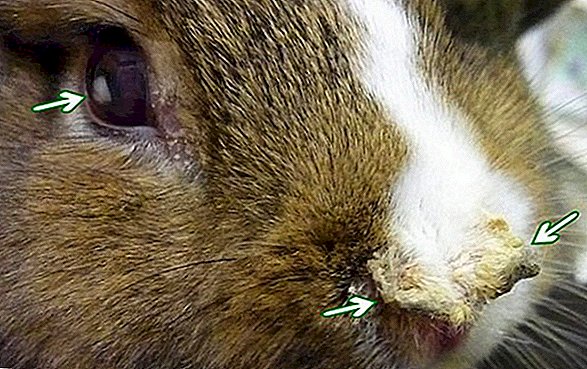
- listeriosis - Ailment caused by Listeria microbe. There are several forms of the disease: hyperacute, in which the animal dies suddenly, without visible symptoms; acute - lasts several days and is manifested by the rejection of food and water, abundant loss of wool. In the absence of treatment, the pet dies after 4-5 days;
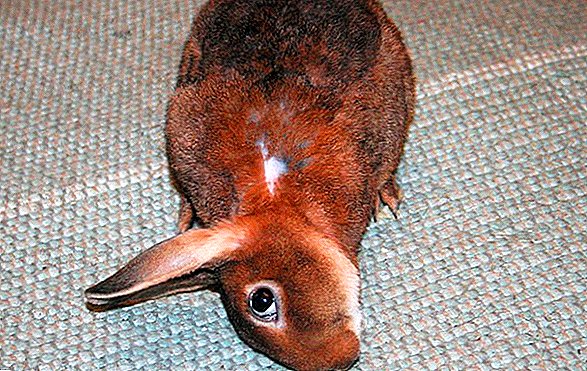
- staphylococcosis - an infectious disease in which there are multiple foci of purulent inflammation and septicemia. Once in the body, staphylococci multiply rapidly and spread through the bloodstream, causing severe inflammation. With the defeat of the animal, numerous pustular lesions in the form of capsules with a liquid are found - abscesses. In this case, the animals lose weight, eat poorly, behave aggressively, cannot, because of the painful sensations, lie in one place.
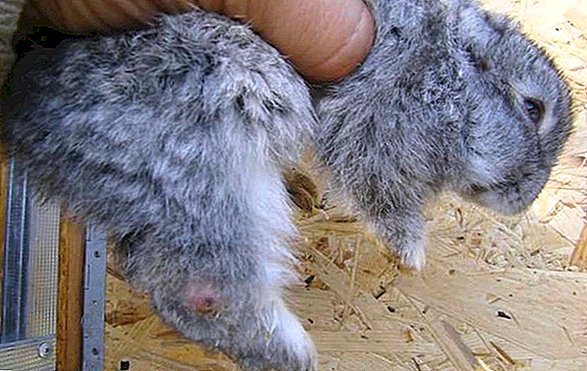
Did you know? Rabbits are very clean animals that lick their fur five times a day, so the appearance of an unpleasant smell spreading from the skin of the animal may indicate the onset of the disease.
What is the treatment of liver disease in rabbits?
Treatment of liver disease is to take various drugs.
First of all, therapy is aimed at:
- removal of intoxication;
- normalization of the function of the digestive system;
- increase of protective properties by taking vitamin-mineral complexes.
Also in some cases, treatment with folk methods.
Medications
Among the drugs in the fight against liver disease have the greatest efficiency:
- "Sulfadimetoksin" (or "Sulfapyridazin"): a drug with a broad spectrum of activity and high antimicrobial activity. Give it to animals with water. The dosage of the drug is calculated based on the weight of the animal: 0.2 g per 1 kg of body weight is prescribed on the first day, and 0.1 g per 1 kg of weight over the next four days. The course of treatment is 5 days, then you should take a five-day break and repeat the treatment.
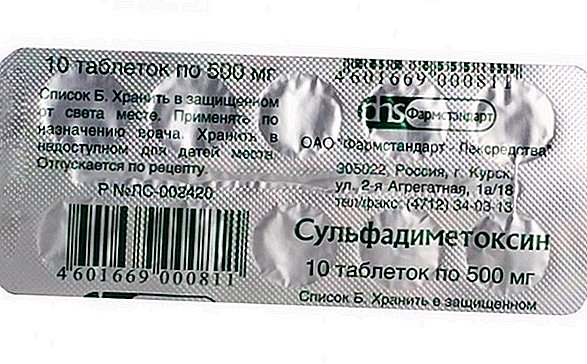
- "Ftalazol": Comes in the form of a white powder, which must be dissolved in water. It has an antimicrobial effect, and it is recommended to use it in combination with Norsulfazole to enhance the effect. Assign a remedy in such dosages: 0.3 g of "Norsulfazol" and 0.1 g of "Ftalazol" per 1 kg of animal weight. The treatment regimen is as follows: 5 days of treatment, 5 days of rest, and again 5 days of treatment.
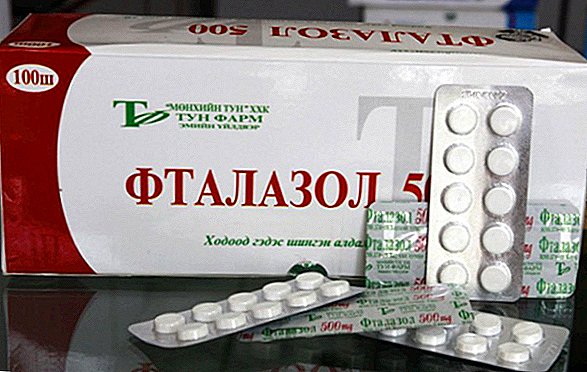
- "Furazolidone": The drug, which has a pronounced antimicrobial effect, is intended for the treatment of coccidiosis, endometritis, pasteurellosis, paratyphoid fever, etc. It is prescribed daily for one week at a dosage of 30 g per individual. Also, the drug can be used for the prevention of diseases in a dosage equal to half the recommended dose.

- Baycox: the most effective remedy for coccidiosis, which makes it possible to completely cope with the disease. The medicine can be diluted with water and given to the rabbit at a dosage of 10 ml per day. Also, the drug is allowed to be administered intramuscularly in 2 cubes, and then add the drug at the rate of 0.2 ml per 1 kg of weight in a drinker with water. The exact treatment regimen is best known from the veterinarian.
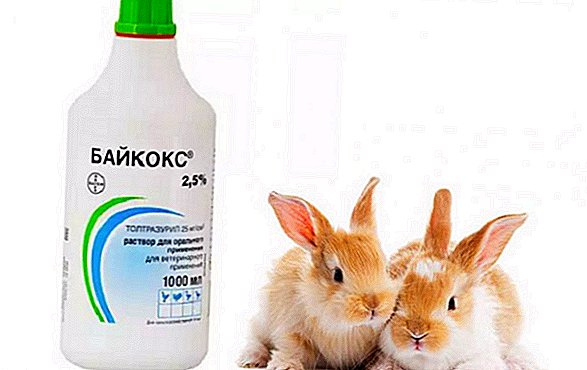
- "Levomitsetin": synthetic antibiotic with a broad antimicrobial activity. Allows you to suppress the action of most strains of bacteria and microbes. Prescribed medication 40 g daily with food or drinking water. The duration of treatment is from two to four weeks. With short treatment (5-9 days) very often relapses occur.
- "Sulfadimezin": antimicrobial drug, characterized by prolonged action. Give the medicine 150 mg once a day. The course duration is 5 days, however, after a four-day break, the treatment is repeated.
When taking any drugs, to prevent the development of complications, the rabbit must be provided with abundant drinking.
Folk methods
Among folk remedies for treating liver diseases in rabbits, including coccidiosis, the method with the use of iodine has become the most popular. Iodine is an agent with excellent antiseptic and antioxidant properties.
Important! To use folk remedies should be paired with adequate medical treatment. Merely iodized water alone is not enough to heal a rabbit.Iodine treatment is based on sealing the animal with specially prepared iodized water. When using such a solution, oocysts gradually begin to lose their viability, cease to multiply, and the existing ones begin to disintegrate.

Preventive measures
Of course, it is better to prevent the development of the disease, rather than take serious measures to cure it.
For the prevention of liver disease should:
- timely vaccinate rabbits;
- regularly disinfect the room where animals live, carefully treat the cells;
- de-worming animals;
- organize pet comfort, high-quality sanitary living conditions;
- provide the rabbits with a complete, balanced diet;
- diseased animals to plant and quarantine them as quickly as possible;
- monitor the purity of water and feed so that they do not contain feces, urine and other contaminants.
Unfortunately, many liver diseases are fatal to animals. This is of great importance both for owners of a small herd and for owners of large farms, since they lose not only fine rabbit meat, but also dietary liver, which is in great demand among consumers.
Therefore, every breeder simply has to know his first signs, effective treatment methods and preventive measures to cope with the disease.















